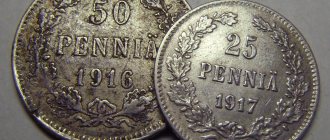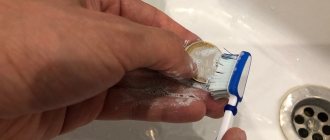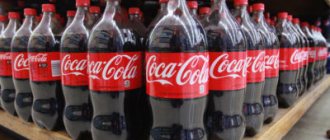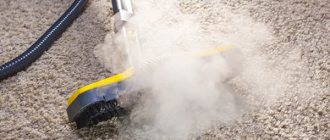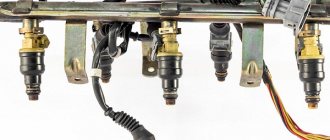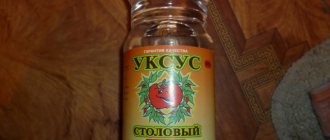It is known that the market value of an old and not very old coin consists of the following factors: its rarity (circulation), the metal of manufacture and, of course, the quality of preservation. Indeed, all other things being equal, a coin in excellent condition can cost many times more than the same coin, but dirty, rusty and worn.
That is why many are interested in the answer to the question of how to clean coins at home. In fact, this question is ambiguous and it is very risky for a beginner to take on the task of cleaning a rarity himself. If improperly cleaned, you can remove a valuable layer of patina from the coin disc or even damage it, which will negatively affect the final auction value.
Let's look at the most gentle ways to clean coins from rust, oxidation and black deposits to a shine at home, depending on what metal they are made of, as well as some universal methods.
Universal methods
By the way, there are universal cleaning methods that are safe for coins made of any metal. Let's take a closer look at some of them.
Soap solution
The most non-aggressive is a pasty or liquid, but very concentrated solution of ordinary soap. The soap is grated on a fine grater and mixed with water until it becomes pasty. If it is heavily soiled, you can soak the coin in this solution for 8-10 hours, then rub it with your fingers.
Leuchtturm special product
In the field of numismatics, a special coin cleaning product from the Leuchtturm company is known. 15 minutes after soaking the banknotes, you can wash off the dirt and clean off any existing corrosion. Also, some selective household chemicals, such as Metal Cleaner from Amway, are used to wash away dirt and plaque.
Toothpaste
Toothpaste with abrasive particles is also widely used, but in order to avoid damage to the coin and the appearance of small scratches on it, we recommend using softer types of toothpaste, for example, for sensitive teeth.
Remember! If you get your hands on a very rare and, quite possibly, expensive coin, it is better not to risk it and entrust its cleaning to a professional restorer.
Replacing varnish
If neither “tin” nor light means help, you will have to change the varnish. But don't be scared. There is nothing complicated about replacing this, it’s easy to do it at home:
- Lay out a waterproof film so that the removed varnish does not stain the floor. Put on a dressing gown or overalls.
- Take a special liquid intended for removing varnish, soak a brush in it and start moving it over the varnish. This is how you remove the varnish. Be sure to use a respirator and gloves, and do not light matches - nail polish remover is usually highly flammable.
- Now the brass needs to be polished. Use special products for this - polishes.
- Rub the polish into your jewelry and figurines, then polish until they begin to shine.
- Now is the time to start applying new polish. Distribute it over the brass surface in an even thin layer. It's best to do this with a brush. But if you’re not much of an artist, use cotton balls.
- Now wait until the varnish dries thoroughly.
- Wipe down your brass items with some soft, dry cloth.
If there is no polish on your brass, and nothing can be done to clean the alloy, then there is only one way out - contact a specialist.
And finally, a video “on topic”:
- How to remove pen marks from leatherette
- How to clean plasticine from clothes
- How to clean gold-plated silver at home
- How to clean salt from suede boots
Cleaning brass coins at home
Money made from a copper-zinc alloy is not particularly susceptible to corrosion, but still needs cleaning. The most commonly used methods are:
- A thick soap solution made from baby or laundry soap, finely grated and mixed with water, will perfectly clean brass coins, but you will have to be patient. This procedure may take several weeks. The money is then washed with warm water and cleaned with a soft toothbrush.
- Cleaning with citric acid takes less time - only 10-15 minutes, but it is important not to overdo the concentration, since this acid is quite aggressive towards metals.
- Oxalic acid, which is easily found in a regular store, also copes with dirt deposits on brass coins. To do this, you need to immerse the money in acid for literally 5-10 minutes, then rinse thoroughly and dry.
- Brass coins are cleaned by immersing them in the famous drink Coca Cola. Phosphoric acid, which is part of Coca-Cola, can effectively remove dirt and patina from the surface of a coin disc.
What is not recommended for cleaning products to avoid damaging them?
Different alloys react differently to one or another processing method. But there are some ways that can equally damage the surface.
- Due to heat treatment, some metals can melt and crumble after cooling.
- Hard brushes made of metal bristles and sandpaper change the surface texture.
- Exposure to sulfuric, nitric and hydrochloric acid concentrates will melt the embossed relief.
Not all that glitters is gold: how to make silver and cupronickel cutlery shine
Cleaning Copper Coins
Depending on the color of the patina formed on the copper coin, there are different cleaning methods:
- A brown, red or purple patina “indicates” the presence of copper oxide on the coin disc, which can be easily removed with a 15% ammonia solution.
- A whitish patina is a sign of a lead ligature on a copper surface; it is removed after the coin has been in distilled water for several days. After this, the coating becomes loose and can be easily wiped off with a cloth.
- The yellow patina indicates that there is a lead alloy on the copper surface, which can be dissolved with 10% acetic acid.
- Blackening on a copper coin disc can be removed using the following methods: vinegar test, ammonia, boiling in oil (olive, vaseline or sunflower oil is most often used), 5-20% solution of sodium hexametaphosphate. More gentle, but also the longest in terms of time, is soaking a coin in kefir - unusual, but effective.
Cleaning silver coins
Silver coins, along with copper ones, are most often found in treasures. Here are the options for cleaning them:
- The most gentle and accessible way is to clean silver coins with soda mixed with water to a paste-like state. This mixture also allows the coin to return to its original shine.
- Green deposits on the surface of a precious metal coin can be removed using a weak solution of sulfuric acid, which is poured into a ceramic cup and the silver coin is placed there. Periodically, the coin is cleaned of softened plaque and placed back into the solution. After the green coating is completely removed, the coin is washed for at least 15 minutes under tap water.
- In order not to take risks with sulfuric acid, which in high concentrations can damage small relief details, you can replace it with citric acid, but the cleaning time will be longer.
Cleaning bronze coins
Cleaning procedures for bronze coins are similar to those used to give copper coins a marketable appearance. Collectors usually use:
- toothpaste,
- Trilon solution,
- Various acids
- Ammonia.
Attention! When cleaning with ammonia (5-15% ammonia solution), you need to be especially careful. The coin is dipped into the ammonia solution and periodically rotated in it, but it is strictly forbidden to remove it from the concentrate. After completing the cleaning process, you must first, by gradually adding water, reduce the concentration of ammonia and only then take out the money.
Useful tips
- Sometimes, during the cleaning process, ancient bronze coins lose their noble patina, for which many collectors are even willing to pay extra. Therefore, “traditional craftsmen” have contrived to apply patina on their own - to do this, just place the money in a 10% hyposulfite solution for 10 minutes. This coating looks quite attractive and also protects the coin disk from corrosion.
- Avoid using brushes with metal bristles, which can damage the surface of the coin and ruin its appearance.
- GOI paste is the worst solution for cleaning coins using improvised materials. It ruins the fine details on the coin and damages the patina.
- Do not use aggressive acids when cleaning - they may destroy the coin.
What is brass and where is it used?
Brass is an alloy of copper and zinc. The material contains elements such as manganese, tin, aluminum and lead particles, which change the characteristics and color shades of the metal. Zinc was discovered in the 16th century, but brass was discovered in ancient times. The metal was obtained by melting copper and zinc-containing ore.
When making the alloy, up to 30% zinc is added to the composition, but to improve technical characteristics, up to 50% metal is added. Brass practically does not wear out and is used in the manufacture of automotive spare parts, serpentine elements, heating radiators, as well as stamped parts and various accessories. Alloy brass is used for the production of aircraft, ships, watch parts and main pipes.
Using tombak (an alloy with a zinc content of no more than 10%) insignia is made. To protect elements from corrosion, cast brass is used. It is used to manufacture bearings, shut-off valves, and separators. Thanks to the properties of the alloy, compasses and heating radiators are produced. Cleaning of brass is carried out without the use of additional equipment and special products.
The metal is used in jewelry in the manufacture of costume jewelry, as well as counterfeit gold jewelry. The alloy content of up to 15% zinc and the addition of 5% aluminum allows you to obtain a material similar to precious. This condition is used when making frames for icons, as well as other items in churches.
